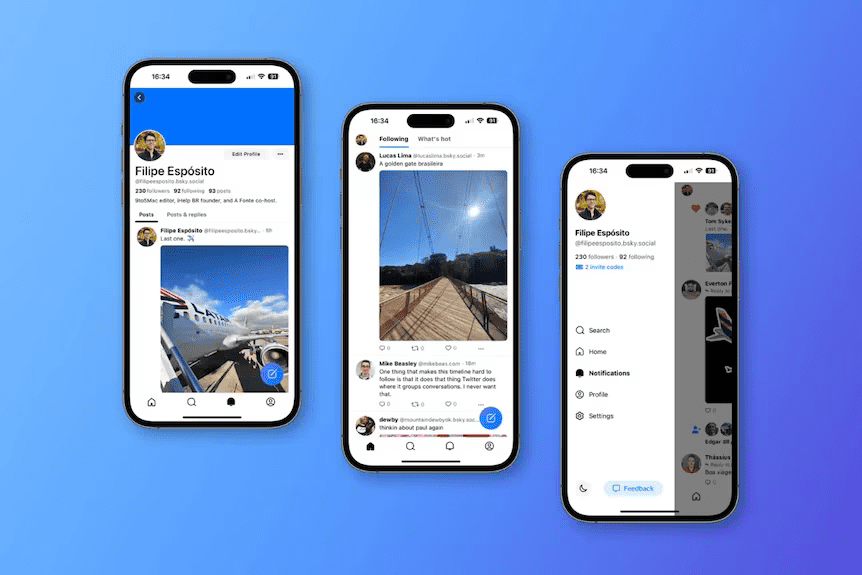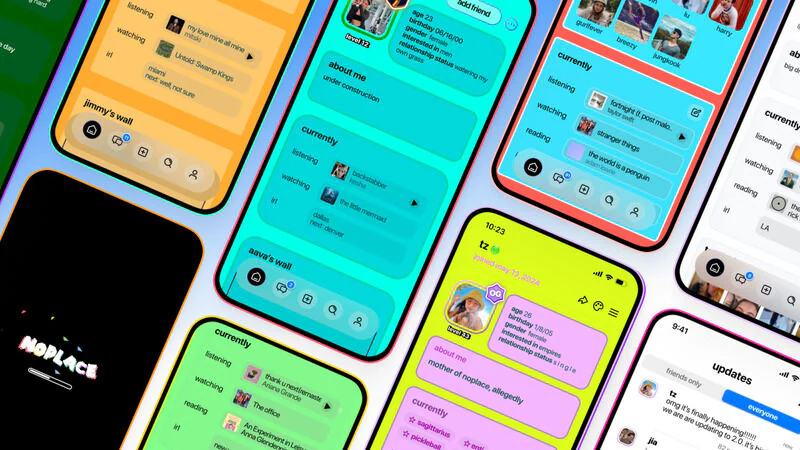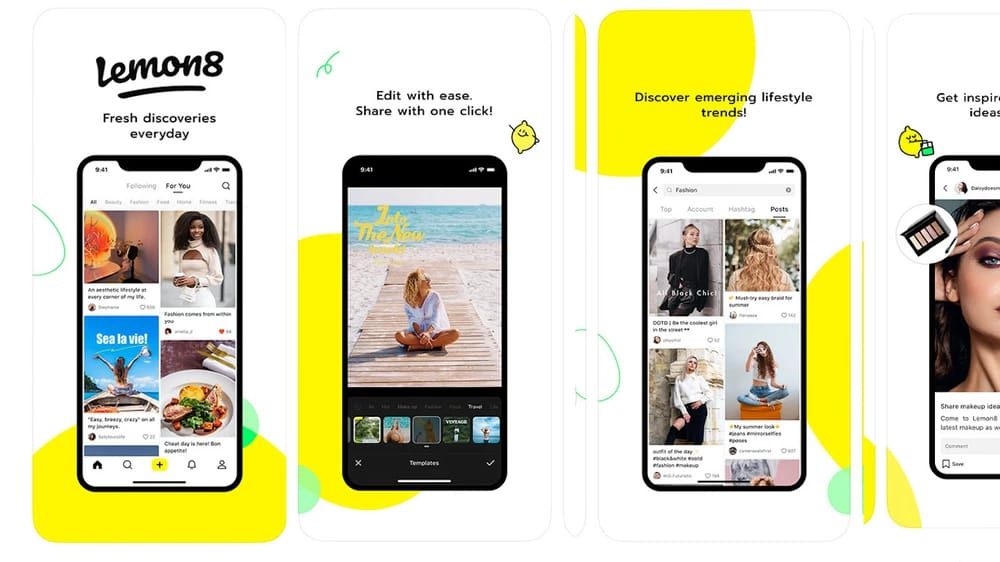In the crowded arena of social media where giants like Instagram, Facebook, TikTok and X dominate, it’s easy to assume innovation has plateaued. Yet a fresh crop of new social platforms is quietly gaining traction reshaping how we connect, share and consume content. These platforms respond to shifting user habits (privacy fatigue, micro-communities, decentralization) and represent potential opportunities (and risks) for brands, creators and communities alike. In this article we’ll explore three breakout platforms that many in the business world haven’t paid enough attention to, examine what makes them different, and outline implications for entrepreneurship, marketing and strategy.
Bluesky: The Decentralised Micro-blogging Challenger

What it is
Launched publicly in 2024 (after invitation-only phases) by Jack Dorsey’s team, Bluesky is a micro-blogging platform built around decentralised social networking principles.Its backend gives users greater control over feeds, moderation and algorithm choice.
Why it matters
- According to one tracker, Bluesky had over 39 million registered users as of late 2025.
- It appeals to users dissatisfied with large platforms who want alternatives to centralised moderation and opaque algorithms.
- For marketers and brands, it signals that “free, open” social network architectures could become viable niches even if not mass-market yet.
What sets it apart
- Customisable timelines: users can choose how content is ordered, filtered or surfaced.
- Federated architecture: Bluesky uses the ActivityPub/social-fediverse ethos, meaning communities might spin up sub-networks.
- Early mover window: Because it’s not yet saturated, there’s potentially lower cost for brand engagement or creator experiments.
Challenges & caveats
- While registration is large, daily active use remains modest compared to incumbents platform momentum is still fragile.
- Monetisation models are still evolving; brand and advertising ecosystems may lag.
- User migration and habit switching are hard: even great platforms struggle to shift entrenched behaviours.
Strategic take-away
If you represent a brand or entrepreneurial venture, consider testing Bluesky as a platform for niche communities, thought-leadership or decentralized audience engagement particularly if you serve tech-savvy or decentralisation-aware segments.
Noplace: The Gen-Z Revival of Customised Social Identities

What it is
Noplace is a social platform launched around 2024 targeting Gen Z users who crave nostalgia, self-expression and less “algorithmic chaos”. The idea: bring back elements of early social networks (custom profiles, tags, interest-based discovery) and blend with modern text-only feeds.
Why it matters
- It highlights shifting preferences among younger users: fewer curated perfection posts, more “authentic” or stylised identity experiments.
- It signals that the monolithic social-feed model may fragment into niche experiences tailored to identity and community rather than mass broadcast.
- For entrepreneurs, niche social networks like Noplace may offer higher engagement and lower competition for attention than giants.
What sets it apart
- Customisable, colourful profiles and tags allow users to express identity more richly (vs. uniform profile cards on big apps).
- Two feed types: one global feed and one friends-only feed, enabling a dual dynamic of public expression and private community building.
- Modest scale currently, meaning early participants may carve meaningful presence.
Challenges & caveats
- Niche doesn’t always scale: You may build a loyal following, but if growth stalls the platform may not become a major channel.
- Monetisation, brand-fit and ad models may still be rudimentary.
- Demographic focus (Gen Z) may limit broader business applicability.
Strategic take-away
If your audience skews younger or you’re building a brand around identity, music, fashion or culture, Noplace is worth exploring. Consider it as an “emerging social sandbox” rather than a mass-market channel but that’s the advantage: lower noise, more distinct presence.
Lemon8: ByteDance’s Lifestyle Platform Climbing Fast

What it is
Lemon8 is a social content platform from ByteDance (the company behind TikTok) and positions itself around lifestyle posts recipes, fashion, beauty, “aesthetic” content.Though not wholly “new” (founded 2020-ish), its major global traction is unfolding in 2024-25.
Why it matters
- It’s achieving strong growth internationally: for example the article notes “5-year search growth of 1,600%” and over 8 million users by early 2025.
- Brands in lifestyle, beauty, travel, wellness are already adopting Lemon8 as a channel alongside TikTok/Instagram.
- It demonstrates how social companies leverage their ecosystem (e.g., ByteDance) to launch adjacent platforms rather than build everything from scratch.
What sets it apart
- Curated lifestyle content distinct from purely entertainment. Brands can build “lookbooks”, community-threads, product-inspiration posts.
- Possibility to capture “discover” traffic: users browsing visuals and ideas rather than only influencers or algorithmically-dominated entertainment feeds.
- Backed by a major company (ByteDance) which suggests potential for scale and resources behind it.
Challenges & caveats
- The platform may face regulatory risks given ByteDance’s geographic footprint and attention from governments on Chinese-origin apps.
- In an already crowded lifestyle social space (Pinterest, Instagram, etc), differentiation and user retention remain challenges.
- For brands: early mover advantage may fade as platform saturates.
Strategic take-away
For businesses in lifestyle, wellness, beauty or travel, Lemon8 offers a rising channel to experiment. Use it to test creative formats, lifestyle storytelling and visual discovery while benchmarking ROI before it becomes competitive.
Broader Implications for Entrepreneurs & Brands
Shifting User Behaviour
The rise of these platforms suggests several behavioural shifts:
- Users crave niche, community-centric experiences rather than mass-broadcast.
- Customisation, authenticity and peer-centred engagement matter more than polished influencer posts.
- The dominance of one or two platforms may fragment; emerging platforms open windows for early adopters to build meaningful presence.
Strategic Opportunities
- Early advantage: Join emerging platforms before they saturate; carve audience, brand voice and community dynamics.
- Experimentation lab: Use platforms like Bluesky, Noplace, Lemon8 for creative marketing pilots creative formats, direct community building, less ad competition.
- Audience fit segmentation: Choose platforms aligned with your audience’s mindset e.g., Gen Z identity platforms (Noplace), lifestyle discovery (Lemon8), decentralised communities (Bluesky).
- Hybrid strategy: Don’t abandon major platforms, but allocate a portion of budget/time to emerging ones to diversify risk and audience reach.
Potential Risks
- Platform instability: New apps may evolve, pivot or disappear. Investing too heavily too early may expose you to platform risk.
- Monetisation gaps: Emerging platforms may lack mature ad systems, analytics or influencer ecosystems.
- Brand safety and moderation: Smaller networks may not yet have robust controls; risk of adverse content impacting brand image.
Conclusion
The social-media landscape is far from settled. Platforms like Bluesky, Noplace and Lemon8 represent fresh frontiers each targeting distinct needs: decentralisation and control, identity-rich expression, and lifestyle discovery respectively. For entrepreneurs and brands, the key takeaway is this: emerging platforms offer strategic value early access, lower competition, novel format experimentation. But they come with caveats risk of scale, monetisation and user retention.
The next step? Choose one emerging platform aligned with your audience, set up a low-risk pilot, measure engagement dynamics, and iterate. As social media continues to diversify, those who engage early and thoughtfully will be best-positioned for the wave of change.






